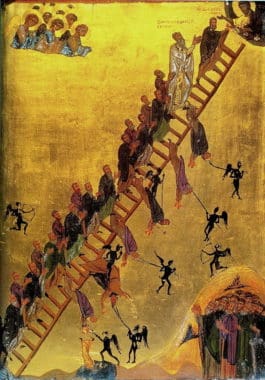Dear Father John, I know that the Church rejects the doctrine of reincarnation, but sometimes I think that reincarnation seems to be a much  more merciful approach than just having one chance to live well and go to heaven or to live badly and go to hell. I mean, so many human beings have had to live in such miserable conditions throughout the thousands and thousands of years of human existence. Wouldn’t it make sense to give them a second and a third chance to get it right, by reincarnating them in better conditions, more favorable situations? Is it possible that we start as “baby souls” and live different lifetimes and different incarnations in order to enter the Kingdom of Heaven? The more we are willing to endure, suffer and sacrifice, the more Christ-like we become and the better our chances of a blissful eternity. Wouldn’t this explain the “old souls” of the world, victim souls (like Little Audrey Santo) and the heroic saints? It sounds like Heaven would be a WEE bit better populated if the system worked this way.
more merciful approach than just having one chance to live well and go to heaven or to live badly and go to hell. I mean, so many human beings have had to live in such miserable conditions throughout the thousands and thousands of years of human existence. Wouldn’t it make sense to give them a second and a third chance to get it right, by reincarnating them in better conditions, more favorable situations? Is it possible that we start as “baby souls” and live different lifetimes and different incarnations in order to enter the Kingdom of Heaven? The more we are willing to endure, suffer and sacrifice, the more Christ-like we become and the better our chances of a blissful eternity. Wouldn’t this explain the “old souls” of the world, victim souls (like Little Audrey Santo) and the heroic saints? It sounds like Heaven would be a WEE bit better populated if the system worked this way.
You have weaved so many different and profound themes worthy of discussion and reflection into this question that I am afraid only a good bachelor’s degree in Philosophy, then another in Theology, would completely satisfy you. Therefore, I don’t think I will try to chase down all the strands. Rather, I will try to tackle the main one or two, or at least what I interpret as the main one or two.
The Saints’ “Standard of Living”
First, it seems that underneath your question is an unspoken presupposition. You seem to be equating a fulfilled and meaningful life with a fully civilized life, as free as possible from suffering, and characterized by material sufficiency and visible achievements or visible creativity of some kind. It’s certainly understandable to see things that way. Our human dignity is such that its fullest expression would always include reaching our maximum potential in every area. But on an individual basis, in a fallen world, God has revealed to us a different standard of fulfillment and meaning. Jesus himself, and the Blessed Virgin Mary (the two highest examples of a fulfilled and meaningful life) were actually poor, lived in a materially primitive society, suffered terribly, received minimal education, didn’t travel the world and experience the delights of modernity, and yet achieved their purpose in life to the full. Likewise, many canonized saints lived lives marked by horrible suffering and injustice, in times and places extremely primitive materially (think of St. Kateri Tekakwitha, for example), and never experienced the vast delights of culture and civilization that today’s six-year-old can access through an iPad. And yet, they reached spiritual maturity in this life, and eternal happiness in heaven.
God’s “Standard of Living”
So what is the standard of a fulfilled and meaningful life, if not material and visible glory? Jesus expressed it in a condensed form in the Beatitudes, in Matthew Chapter 5: “Blessed are the poor in spirit… those who mourn… the meek… the pure in heart… those who hunger and thirst for righteousness… the merciful… the peacemakers… and those persecuted for the sake of righteousness…” These are linked to moral and spiritual qualities. Many times, the interior dispositions they correspond to are completely invisible to the outside world. And they can be completely (or mostly) absent in a life that seems to “have everything” from an external point of view.
I am reminded of Queen Elizabeth I of England’s dying words. The Queen who launched the British Empire, made England into the dominant world power, and defeated the famous Spanish Armada, died after reigning for almost fifty years. Her dying words, after days of sleeplessness and seemingly haunted panic, were, “All my possessions for a moment of time!” On the outside, in the eyes of the world, she lacked absolutely nothing. But on the inside, as the end approached, she felt a terrible emptiness, an emptiness that she longed to have more time to try and fill.
In our second post, we will look at the essential core of meaning of our human life, where we will ultimately find fulfillment and how time is on our side. In part III, we will examine why pagan religions often adopted various forms of reincarnational doctrines and how reincarnation subtly denies and obliterates our capacity to love, thus denying our human dignity.
Art: ”The Ladder of Divine Ascent” or ”The Ladder of Paradise’‘ icon described by John Climacus, Monastery of St Catherine, Mount Sinai, PD-US-old-100, Wikimedia Commons.

